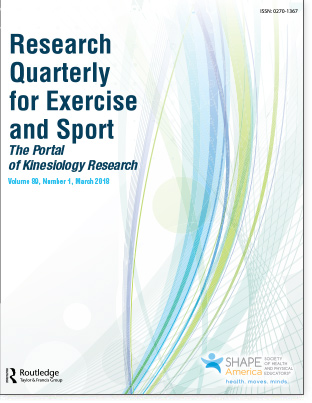 RQES Table of Contents
RQES Table of Contents
Entering the Field of Physical Education: The Journey of Fifteen First-Year Teachers
Julie Ensign, Amelia Mays Woods, and Pamela Hodges Kulinna
 With nearly 150,000 new teachers entering the field each year, the education system is infused with an abundance of new energy and a palpable sense of optimism wrapped around a willingness to bring change (Ingersoll, Merrill, & Stuckey, 2014). Often, though, within short order, those ideals clash with full-blown doses of the reality encountered during day-to-day experiences. During the first 5 years of employment, more than 41% of teachers will leave the profession (Perda, 2013), a trend that has been slowly increasing during the last 25 years (Ingersoll et al., 2014). These percentages are often higher in urban and rural education settings (Barnes, Crowe, & Schaefer, 2007), presenting a significant barrier for overall improvement of the education system.
With nearly 150,000 new teachers entering the field each year, the education system is infused with an abundance of new energy and a palpable sense of optimism wrapped around a willingness to bring change (Ingersoll, Merrill, & Stuckey, 2014). Often, though, within short order, those ideals clash with full-blown doses of the reality encountered during day-to-day experiences. During the first 5 years of employment, more than 41% of teachers will leave the profession (Perda, 2013), a trend that has been slowly increasing during the last 25 years (Ingersoll et al., 2014). These percentages are often higher in urban and rural education settings (Barnes, Crowe, & Schaefer, 2007), presenting a significant barrier for overall improvement of the education system.
In physical education, beginning teachers face unique challenges such as isolation (Shoval, Erlich, & bFejgin, 2010), marginalization (Blankenship & Coleman, 2009), reality shock (Richards, Templin, & Gaudreault, 2013), and role conflict (Locke & Massengale, 1978). Professionally, issues with classroom management (MacPhail & Hartley, 2016) and the novice’s lack of instructional expertise and experience can create concerns during lesson instruction and the transfer of knowledge (Shoval et al., 2010). In addition, the teaching environment can pose significant barriers. For example, negative outcomes often occur when induction teachers perceive low levels of support from colleagues, students, and administrators (MacPhail & Hartley, 2016). Diverse populations, education policies, and lack of resources, such as space and equipment, can detrimentally impact assimilation
(Richards et al., 2013).
To read the rest of this article,
click here to download a pdf.